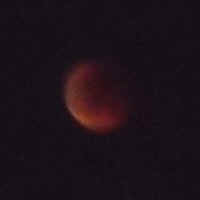 1
1
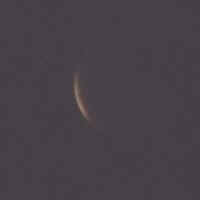 2
2
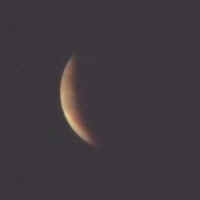 3
3
Orwell Astronomical Society (Ipswich)
Lunar Total Eclipse, 15 June 2011
A lunar total eclipse occurred on 15 June 2011. Event times (UT) were as follows:
At the time, I was on holiday on a river cruise along the Rhine, moored just outside Strasbourg on the French/German border. The eclipse was due to enter umbral phase a few minutes after moonrise at 19:22 UT and this provided a good reason to escape the Captain's formal meal. Unfortunately it was very cloudy to the east, and the Moon didn't become visible until some 25 minutes after the umbral phase began and, even then, was visible mostly through thin cloud.
Fred Espenak's eclipse page (see url below) describes the Danjon Scale of brightness of lunar eclipses as follows:
Danjon Scale of Lunar Eclipse Brightness
The Moon's appearance during a total lunar eclipse can vary enormously from one eclipse to the next. Obviously, the geometry of the Moon's path through the umbra plays an important role. Not so apparent is the effect that Earth's atmosphere has on total eclipses. Although the physical mass of Earth blocks all direct sunlight from the umbra, the planet's atmosphere refracts some of the Sun's rays into the shadow. Earth's atmosphere contains varying amounts of water (clouds, mist, precipitation) and solid particles (meteoric dust, organic debris, volcanic ash). This material significantly filters and attenuates the sunlight before it is refracted into the umbra. For instance, large or frequent volcanic eruptions dumping huge quantities of ash into the atmosphere are often followed by very dark, red eclipses for several years. Extensive cloud cover along Earth's limb also tends to darken the eclipse by blocking sunlight.
The French astronomer André-Louis Danjon proposed a useful five-point scale for evaluating the visual appearance and brightness of the Moon, denoted L, during total lunar eclipses. L values for various luminosities are defined as follows:
L=0
Very dark eclipse. (Moon almost invisible, especially at mid-totality.)
L=1
Dark eclipse, grey or brownish in coloration. (Details distinguishable only with difficulty.)
L=2
Deep red or rust-coloured eclipse. (Very dark central shadow, while outer umbra is relatively bright.)
L=3
Brick-red eclipse. (Umbral shadow usually has a bright or yellow rim.)
L=4
Very bright copper-red or orange eclipse. (Umbral shadow has a bluish, very bright rim.)
The assignment of an L value to lunar eclipses is best done with the naked eye, binoculars, or a small telescope near the time of mid-totality. It's also useful to examine the Moon's appearance just after the beginning and just before the end of totality. The Moon is then near the edge of the shadow, providing an opportunity to assign an L value to the outer umbra. In making any evaluations, the instrumentation used and the time should both be recorded. Also note any variations in colour and brightness in different parts of the umbra, as well as the apparent sharpness of the shadow's edge. Pay attention to the visibility of lunar features within the umbra. Notes and sketches made during the eclipse are often invaluable in recalling important details, events, and impressions.
Using the Danjon scale, I made the following estimates of L:
The following picture sequence was taken from 19:50 UT until virtually the end of the eclipse.
 1
1
 2
2
 3
3
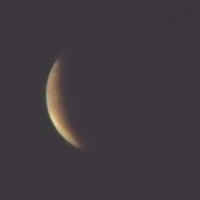 4
4
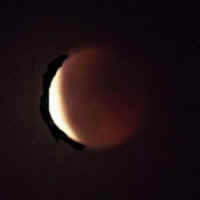 5
5
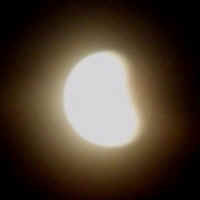 6
6
See Fred Espenak's eclipse web site eclipse.gsfc.nasa.gov/eclipse.html.
Paul Whiting, FRAS